TITLE: THE LION AND THE JEWEL
PLAYWRIGHT: WOLE SOYINKA
SETTING: AFRICAN VILLAGE OF ILUJINLE
YEAR OF PUBLICATION: 1963
PUBLISHER: OXFORD UNIVERSITY PRESS
BOOK SUMMARY
Generally the play talks about the clashes happen between the modernists and traditionalists. Lakunle who is the school teacher presents the class of modernists who want to bring changes adopted from western culture while the villagers such as Sidi and the chief himself stand for the class of traditionalists who preserve their own culture.
THE SYNOPSIS OF THE PLAY
The title of the play is fundamentally symbolic whereby the lion stands for men and the jewel stands for women. From the play, chief Baroka is labeled as the Lion whereas Sidi is labeled as the Jewel.
Chief Baroka is labeled as the lion because he uses women for enjoyment, he decides to marry any girl or women he wants inspite of having several wives. From the play, Chief Baroka tries to deceive Sidi who is to be married to the primary school teacher Lakunle. He finally succeeds to marry her. This is because he deceives her that he is sexually impotent. When Sidi goes to Baroka’s house, Baroka takes her into his room and the wrestling match between Sidi and Baroka takes place.
Baroka achieves to make love with Sidi and he automatically marries her because he has become the first man to make love with her (Sidi). In succinct explanation, the play is about a so very naturally beautiful girl called Sidi. Sidi is so cute to the extent that she is called the jewel of the Ilujinle society. A jewel is a person or thing that is very important or valuable.
In the play, Baroka who is labeled the Lion is a womanizer, oppressive and deceitful. For instance he sends his head wife (Sadiku) to Sidi. He furthermore, deceives his wives that he is sexually impotent so that Sadiku can go to Sidi to reveal this secret which is not true. His wives and Sidi believe that Chief Baroka is impotent, but later on, they find themselves to have been deceived because Chief Baroka succeeds to bed with Sidi and ultimately Sidi praises Baroka a lot that he is very powerful sexually despite his age. At first Sidi was not interested to marry Baroka because Lakunle had started educating her about modernity.
Wole Soyinka tells us that Sidi is willing to marry Lakunle but she insists that her bride-price should be paid first something that Lakunle was not willing to do so. In the end of the story, Lakunle feels, alienated (isolated) and of course totally betrayed by Sidi. Chief Baroka seems to be stronger than Lakunle that’s why the chief (Lion) achieves to marry Sidi. Therefore, the story is all about the conflict between traditionalism against modernity whereby in the particular society, traditionalism seem to be stronger than modernity.
SUMMARY ACCORDING TO SECTIONS.
The play is divided into three sections, Morning, Noon and Evening as explained here below;
MORNING
This section of play is set at the edge of the market, situated at the village centre. We see Sidi (a beautiful and virgin girl) with a pail on her head. We also see Lakunle, a teacher at the bush school. Lakunle attempts to convince sidi so that she may agree with what he says. Lakunle talks to Sidi something which he learns in town which is strange to her. As a response Sidi says that she will marry Lakunle if her bride price is paid in advance. Unfortunately, Lakunle does not believe in paying bride price. He looks at it as an act of buying women. So Lakunle is not ready to pay bride price instead he wants to preach change so that people can stop paying pride price.
Moreover in this section, we are told about the stranger who has come with a map to Ilunjinle village and girl dancing style. When asked by girls Lakunle rejects claiming that dancing is for idiots (fools). This shows that there is a conflict between traditionalism and modernity.
Furthermore, Baroka in this section is introduced. Baroka wants to seize Lakunle because he wants to steal the village virgin girl (Sidi). As a contradiction the chief says that the wise people like Lakunle must be there so that they criticize when things go astray for that reason, Baroka is ready to be criticized. Therefore, as a summary this first section has clearly shown the conflicts between modernity and traditionalism.
NOON
The section is set at a road by the market. Here we see Lakunle carrying a bundle of fire wood which Sidi wanted to collect. So, Lakunle helps Sidi to carry the firewood. The two meet old women with a shawl on her head. She is Sadiku the chief’s wife who tells Sidi that she has been sent by the lion meaning Baroka the chief. By saying that she will be the elder wife of the next chief. Sidi takes this idea as bad because she thinks Baroka will simply use her as instrument of enjoyment.
She openly declares that she has learnt a lot from Lakunle so she is now gender conscious. Sidi’s negation surprises Sadiku because it is un common for any girl to reject the chief’s proposal. Sidi gives the reason for her refusal that they have different ages. Also Sadiku asks her to sup with Bale (Chief) Sidi rejects again and says that she cannot eat supper with married men. In addition to that Sidi argues that all girls who sup with chief become his wives or concubines. She concludes that Baroka is a womanizer.
In the same section we see Baroka uses women as instrument of enjoyment as we can see his favorite wife cuts his armpit’s hair. He says that he enjoys being cut by a woman. When he is given the report of Sidi’s refusal, Baroka gets angry hence he traps Sidi by telling his wife that he is no longer sexually powerful he is IMPORTENT.
NIGHT
This takes place at the village centre. This time we see Sidi at school room window, looking at her pictures. Then we see Sadiku coming with a carved figure of Baroka. The figure is naked. This amuses and amazes Sidi.
Sidi understand what Sadiku means when she tells her about Baroka’s impotence. So, Sadiku views Sidi as a winner as she refused to marry Baroka. The two women congratulate each other that now have a say in the sight of men. So feminism is at work. Sadiku advises Sidi to go and eat the supper at Baroka’s place because they believe that he will do nothing since he is impotent.
Hearing that, Lankule advices Sidi to do not go to the place but Sidi reject Lakunle’s advice. She goes to the palace to see Baroka in order to mock him as she believes that Baroka is impotent as she has been told. Later we see Sadiku advising Lakunle to engage himself in farming so that he may get the bride price for marrying Sidi. Lakunle, further, says that no man will be marrying more than one wife.
Then we see Sidi at palace trying to see if it is true that Baroka is impotent. It is then discovered that Baroka is not impotent as he previously claimed to be. This is evidenced by him sleeping with Sidi. So it is discovered that Baroka was tricky by telling his wife that he is impotent. Un expectedly, Sidi is prepared to marry Baroka the chief. She praises Baroka a lot as she says he is very powerful sexually despite being aged sixty. Hence, Sidi says goodbye to Lakunle who has been persistently asking her a hand for marriage.
THEMATIC ANALYSIS
A theme is the central idea within any text (short story, play, poem, and novel, for example). This idea repeats itself throughout a work, drawing the attention of the reader to its importance. In some cases, a theme is used to illustrate the importance behind a moral, lesson, or point.
PROTEST
Sidi is shown to protest against the new ideas brought by Lakunle who considers bride price as an out-dated custom. (Pg 7), Sidi says that she is ready to be married any day but her bride price must first be paid. Lakunle protests against bad African traditions and customs. For example he is against bride-price and forced marriages.
BETRAYAL
The term betrayal is defined as the act of not being faithful to something or someone. In other words, it refers to an act which indicates a lack of loyalty to somebody or something. In the play it is shown that after getting western education Lakunle betrays his traditional e.g. paying bride price. He appears stranger in his own country. For example, he refuses to pay bride price claiming that it is primitive custom. He also talks about having a collage to teach people how to dance, wearing high heeled shoes and other things which are not of any benefit to the society. According to Baroka the society is better to live without any new thing. (Pg 9)
Lakunle disappears and leaves his class when Sidi passes with her pail. This shows how irresponsible Lakunle is. Lakunle is busy with Sidi arguing about their personal love instead of teaching; this disqualifies him to be a good teacher. He makes up his mind to go back while it is too late.
CULTURE INTERFERENCE
Lakunle is shown to bring new changes adopted from western culture which interfere with traditional ways of living. Modern ways of living imposed by Lakunle are shown to get strongly opposed by the traditionalists like Sidi. Example he wants the villagers to forget about the bride price, kissing and dancing in western ways.
MISUSE OF POWER/POOR LEADERSHIP
The playwright labeled chief Baroka (the Bale of Ilujinle) as a leader who is irresponsible; as he is always busy for women not for the development of his people, he is also labeled as a womanizer. He uses his position and riches to oppress and discriminate women something of which is not good at all. Furthermore, Wole Soyinka labels Baroka as a leader who is not educated. For example when he meets Lakunle, he is heard saying “Akowe. Teacher wa Misita Lakunle” he further says “Guru Morin guru moring”.
Something which reveals that he cannot even master his language. Also Baroka uses his title to drive the village on his own ways. Example, he commands Sadiku to go and collect a number of brides for him. Also in (Page 17) he uses his power to embarrass Lakunle by seizing him, and commands his attendants to serve him a slap. This shows there is the power that operates to the people who are less powered.
AWARENESS
This is revealed when Sadiku visits Sidi; Sadiku says “ I bring a message from my Lord, Baroka wants you for a wife” Sadiku says “My Lord says that if you would not be his wife, would you at least come to supper at his houses to night There is a small feast in your honor …..” Sidi replies by saying “Ho ho! Do you think that I was born yesterday? The tales of Baroka’s little suppers, I know all; tell your lord that Sidi does not sup with married men.” This shows that Sidi is aware of Baroka’s behaviour.
Is the custom of having many wives at the same time. For example, in the play, the playwright reveals to us that Baroka is portrayed as a man who struggles to have many wives as he can. He has his elder wife called Sadiku, his favorite called Ailatu and yet he struggles to have Sidi. This shows that there is a polygamous life within the village of Ilujinle.
This is an act of making people believe something which is not true. Chief Baroka is deceitful. This is because he deceives his head wife (Sadiku) that he is no man (sexually powerless) something which is not true. The aim of deceiving his wife is to make this secret known to Sidi so much that Sidi may not afraid of him. Sadiku tells the secret to Sidi. As the result, when Sidi pays a visit to Baroka’s palace, Baroka succeeds to make love with Sidi. In (Pg 29).
Both, Sidi and Sadiku are shown to be ignorant ones. In (Pg 37), Lakunle tells Sadiku that her mind is simple. He says that Sadiku is at the age of seventy but she does not not how to read, write and think. Also in (Pg 53) Sidi complains about the sayings given by Baroka. She says that the sayings are bored at her eyes and head. She likes someone to state something clearly without any hidden meaning.
POSITION OF A WOMAN IN A SOCIETY
Women are labeled as weaker sex and have smaller brains than men. For example Lakunle says “The scientists have proved it, it is in my books. Women have a smaller brain than men. That’s why they are called the weaker sex”. This is humiliation to women and is against the principle of fairness and justice i.e. gender equity.
Women are considered to be commodities. Sidi refuses to get married to Lakunle without bride-price. Through bride price women are sold like commodities or properties in the market stalls. For example chief Baroka has many wives simply because he is rich.
Women are described as beings that can easily be tricked. They fall for the simplest tricks and lies. The playwright shows this through Sidi who is tricked by chief Baroka (the Lion) into sleeping with him, the same trick that works with Sadiku (the Bale’s head wife) who is tricked by the chief. For example Baroka says “The time has come when I can fool myself no more. I am no man, Sadiku. My manhood ended near a week ago.” “I wanted Sidi because I still hoped- A foolish thought I know, but still – I hoped that with a virgin young and hot within, my failing strength would rise and save my pride.” which was totally a lie.
Women are portrayed as illiterates, ignorant and exploited as of their lack of even the most basic education. A girl like Sidi is used by the playwright to represent women of Africa who are illiterate and exploited.
They are portrayed as the main upholders of traditions. This is shown through Sidi who refuses to marry Lakunle unless he pays the bride-price to Sidi; marriage is all about a man being able to fulfill the important customs such as paying the bride-price without which marriage and love have no meaning.
They are alienated (discriminated) from making important decisions which affect their lives in particular. For example in the play, we see and hear chief Baroka decides to marry another wife.
Women are portrayed as conservative (rigid) not accepting changes. For example Sidi does not accept any change whether good or bad. For example she insists on the question of bride-price.
Women are portrayed as respectful; for example Sidi maintains her virginity till marriage.
Women are hard-workers. For example Sidi is busy fetching’ water and firewood. She carries big bundles of firewood and big pots (pails) of water on her head to the extent that Lakunle stops her. For example Lakunle says “No I have told you not to carry loads on your head” based on the argument that the loads will shorten her neck very soon.
Women are portrayed as people who are obedient and not jealousy. For example Sadiku obeys her husband as she does whatever she is instructed. Furthermore, Sadiku is sent to seduce Sidi to marry chief Baroka.
Women are portrayed as people who are sexually forced to marry people whom they don’t really love by any means. For example Baroka tells Sidi that “The truth of this, old wine thrives best within a new bottle” and after losing her virginity to Baroka, Sidi is heard praising him (chief) and she argues “Do you see what strength he has given me? That was not bad. For a man of sixty…… It was the secret of God’s own draught.”
Both Ailatu and Sidi are taken to be the instruments of pleasure. They both occupy the honor of being the latest choice. If one becomes the latest choice of Chief Baroka, her major task is to pull or pluck the armpit hair. For this reason a worman is portrayed to be the instrument since Baroka says that he feels very sweet when his latest choice does so. (Pg 27)
A woman is portrayed as an inferior person who is there to fulfill the order given by a man, example Sadiku who is commanded by Lakunle.
The term conflict simply refers to the collision of interests or ideas between two or more opposing groups or sides. In this play, the writer shows various types of conflicts as follows;
- Sidi is in conflict with Lakunle because of the bride price. Lakunle wants the village to get rid of the bride price while Sidi doesn’t. She afraids that the villagers would think that she is not virgin if she is married off without the bride price. (In Pg 7)
- Lakunle is shown to have conflicts with Sadiku, this is because of Sidi. Lakunle wants to marry Sidi while Sadiku persuades Sidi to marry Baroka.
- Lakunle is in conflict with Baroka because of Sidi. Both of them find themselves to have an interest in her. In (Pg 58), Lakunle says he is ready to kill Baroka though he is the village chief. He does not afraid the prison, he wants to teach Baroka.
- Village girls with Lakunle. This is when Lakunle insult their native culture and promote western culture. They finally decide to sing a song for him. (In Pg 14)
BRIDE PRICE
Refers to as money and/or property that in some societies, a wife must pay to her husband when they get married as thanks giving. OR money and/ or property, that in some societies, a husband must pay to his wife’s family when they get married. In the play, Sidi (the jewel) refuses to marry Lakunle simply because Lakunle does not want to pay the bride-price (dowry).
ALIENATION
Lakunle alienates himself from society. He feels, that whatever is done by the society is primitive and it is he who knows what the society should do. The society also alienates him.
FORM ANALYSIS.
Wole Soyinka has madethe use of indirect or symbolic title. One could think of a lion as an animal and Jewel as the precious stone. The two terms have been used symbolically to present the powerful person called Baroka and the beautiful girl called Sidi.
The play is set in Yoruba village of Illujinle. It is therefore the real setting; this is because the places mentioned do exist.
The play is arranged chronologically. The events have been arranged from morning when Lakunle is shown in his school and abandons the students, noon when Sadiku meets Sidi and Lakunle to give the message of the lion and night when Sidi gets trapped with Baroka.
DICTION (LANGUAGE USE)
- Simple language has been used to make the play understood.
- Conversational language in dialogue between characters.
- Uses of oral literary devices (sayings) Example in (Pg 54), Baroka says “Old wine thrives best within a new bottle” In (Pg 5), Lakunle says “Charity begins at home”
- The language is also rich in figures of speech example; – Simile in (Pg 2) “As stubborn as an illiterate goats”
–Personification in (Pg 6), Lakunle says “My love will open your mind” In (Pg 53), Sidi says “Your words fly on a different path”
-Metaphor in (Pg 58) Lakunle says Baroka is a creature of the wilds.
- The use of symbolism: The title is symbolic whereby the Lion stands for men; chief Baroka in particular while the Jewel symbolizes girls (beautiful girl like Sidi). The Lion; Baroka is the chief of the village and despite his age, he is still sexually active and still considered manly. Baraka is searching for a new wife and wins over Sidi with his manly ways. Baroka is compared to an African symbol for strength, the lion which could be comparable to our bear.
- Lakunle: Lakunle represents the influence of western society in the village. Lakunle was taught in a western style manner and tries to promote those ideas in the minds and hearts of his villagers.
- Stamps: The stamps in which Baroka tempts Sidi to put her face on represent the falsehood.
- Photographer/magazine: The magazine symbolizes the reoccurring theme of technology and western culture dominating other cultures
- The Bride-price: represents the village’s customs which Lakunle feels are barbaric.
- Sadiku: Baroka’s deceitful plan to win over Sidi. Sadiku also symbolizes the gossipy woman who cannot hold her tongue.
- Hyperbolic language, example in (Pg 3), Sidi says “when the whole world Knows of the madman of Ilujinle who calls himself a teacher” This gives an example of the hyperbole.
- The use of vernacular language example the word “Sango” and “ogun” which mean God They are not English words. The playwright has mixed the language with vernacular words.
FIGURES OF SPEECH
- Satire; refers to as the act of mocking people in order to show how foolish or incompetent they are. For example when the girls call Lakunle for a dance, Lakunle says “The dances are for fools” and when Sadiku is sent to Sidi by Baroka, Sidi, rejects by saying “I can’t sup with married men”
- Metaphors; This is the comparison of two different things without using conjunctions: for example, in page 47 Baroka says “Sadiku my faithful lizard”. Here Sadiku is compared to a lizard. in (Pg 58) Lakunle says Baroka is a creature of the wilds.
- Proverbs; It is a well known phrase or sentence that gives advice/lessons etcetera. For example Prof. Soyinka uses “Old wine thrives within a new bottle”
- –Personification in (Pg 6), Lakunle says “My love will open your mind” In (Pg 53), Sidi says “Your words fly on a different path”
- CHARACTERIZATION
BAROKA
-He is the lion hinted on the cover page
-The chief of Ilujinle village.
-The womanizer who struggles to collect the brides of the Ilujinle village.
-The husband of Sadiku, Ailatu and Sidi.
SADIKU
– The elder wife of Chief Baroka
-The bride collector of Chief Baroka.
-She is an ignorant person since she is at the age of seventy but does not know how read and write.
SIDI
-She is the jewel mentioned on the title
-She becomes very arrogant when her image appears on the village magazine.
-She is a traditionalist who insists on the payment of bride price.
-She is finally trapped by the trick of Baroka and becomes his wife.
LAKUNLE
- He is the village teacher
- He is shown to fall in love with the village Belle (Sidi)
- He is a modern man who prefers western culture to African culture.
THE FAVORITE (AILATU)
-The latest choice of Baroka before he falls in love with Sidi.
-She is taken to be the only wife whose task is to pluck the armpit hair of Baroka.
-She becomes hungry when she hears the coming of Sidi.
OTHER CHARACTERS
-A wrestler, surveyor, mummers, dancers, school boys and village girls.
THE MESSAGE OF THE PLAY
Changes are necessary for development but in order to make changes, the society concerned should weigh the advantages over disadvantages of those changes.
Example; African culture against western culture i.e. polygamist and monogamist, pride price, European dance etc.
THE RELEVANCE OF THE PLAY
The play relates to our contemporary society. For instance the issues of misuse of power, ignorance, bride-price, deceit, women oppression and discrimination, polygamy, the influence of western education and culture etc take place in our societies.
Therefore, one may proudly conclude that Professor Wole Soyinka has successfully made his readers aware of what is really happening in their respective societies.

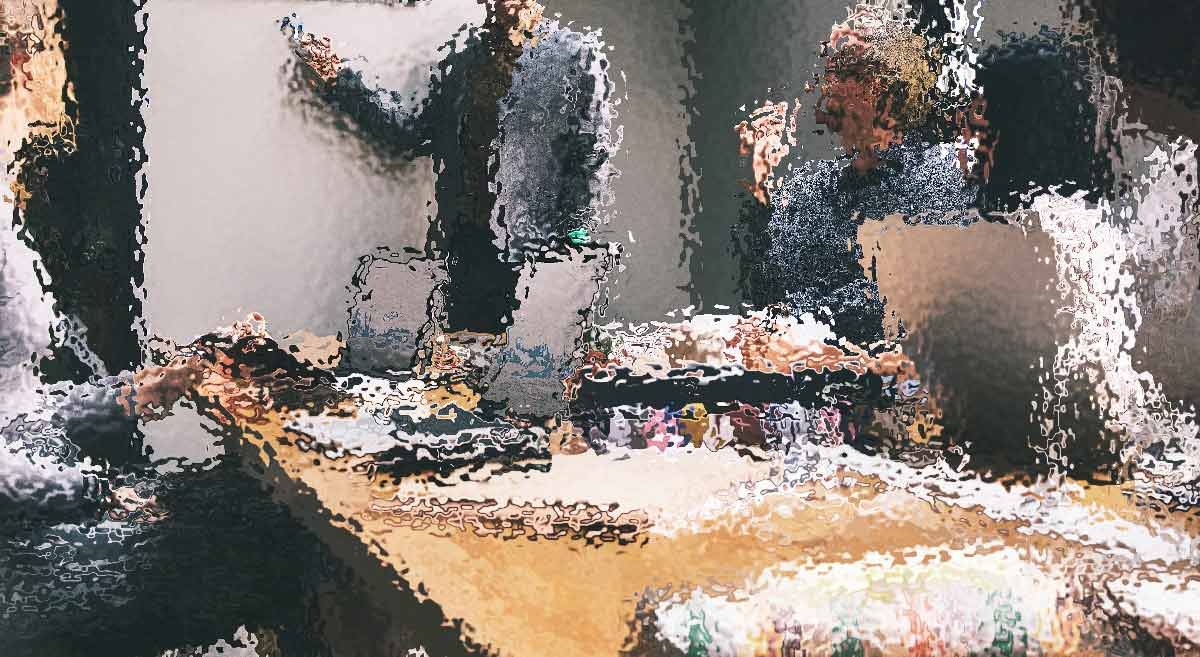


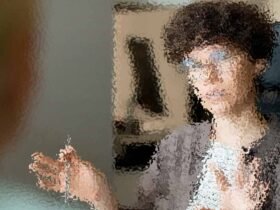

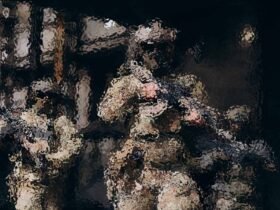

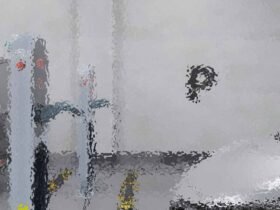


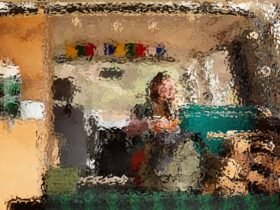




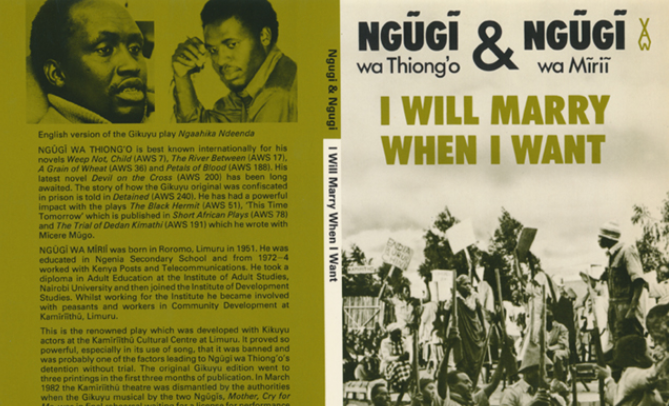


It’s truly very complicated in this busy life to listen news on TV,
so I just use the web for that purpose, and take the most recent information. asmr 0mniartist
Today, I went to the beach front with my kids.
I found a sea shell and gave it to my 4 year old daughter and said “You can hear the ocean if you put this to your ear.” She put the shell to her ear and
screamed. There was a hermit crab inside and it
pinched her ear. She never wants to go back! LoL I know this
is totally off topic but I had to tell someone!
asmr 0mniartist
Hi! I know this is kind of off topic but I was wondering if you
knew where I could get a captcha plugin for my comment form?
I’m using the same blog platform as yours and I’m having trouble finding
one? Thanks a lot! 0mniartist asmr
I am sure this post has touched all the internet visitors, its
really really fastidious paragraph on building up
new blog. asmr 0mniartist
Hi! I simply wish to offer you a big thumbs up for your great info you
have got here on this post. I will be coming back to your site for more soon. 0mniartist asmr
I’d like to thank you for the efforts you have put in penning this site.
I really hope to see the same high-grade content from you in the future as well.
In truth, your creative writing abilities has motivated me
to get my own, personal website now 😉 0mniartist asmr
Good blog you’ve got here.. It’s hard to find high-quality writing like yours nowadays.
I seriously appreciate people like you! Take care!!
0mniartist asmr
When someone writes an article he/she maintains the thought of a user in his/her mind
that how a user can be aware of it. So that’s why
this piece of writing is outstdanding. Thanks! asmr 0mniartist
I quite like reading a post that can make men and women think.
Also, many thanks for allowing me to comment! 0mniartist asmr
I have failed to download the document, can’t you set download option so that I can have an access of these materials?
Excellent goods from you, man. I’ve understand your stuff previous to and you’re just too great.
I actually like what you’ve acquired here, really like what you are stating and the
way in which you say it. You make it entertaining and you still care for to keep it
sensible. I can’t wait to read far more from you.
This is actually a wonderful web site. asmr 0mniartist
How are you
How do I get the soft copy of the email analysis